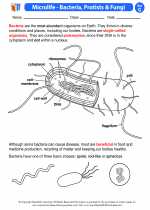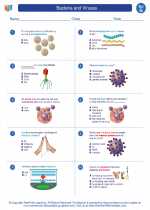Neurons
A neuron is a specialized cell that is the basic building block of the nervous system. These cells are responsible for transmitting information in the form of electrical and chemical signals throughout the body.
Structure of a Neuron
A neuron consists of three main parts: the cell body, dendrites, and axon.
- Cell Body: Also known as the soma, the cell body contains the nucleus and other organelles necessary for the neuron's function.
- Dendrites: These are the short, branch-like extensions of the neuron that receive incoming signals from other neurons or sensory receptors.
- Axon: The axon is a long, slender projection that transmits electrical signals away from the cell body and towards other neurons, muscles, or glands.
Types of Neurons
There are three main types of neurons:
- Sensory Neurons: These neurons carry signals from sensory receptors to the central nervous system.
- Motor Neurons: Responsible for carrying signals from the central nervous system to muscles or glands, allowing for movement and secretion.
- Interneurons: These neurons act as connectors and process information within the central nervous system.
Function of Neurons
Neurons function by transmitting electrical impulses and releasing chemical messengers, called neurotransmitters, at specialized junctions called synapses. These impulses allow for communication between neurons and ultimately control various bodily functions, thoughts, and behaviors.
Study Guide
Here are some key points to remember about neurons:
- Identify and describe the main parts of a neuron.
- Explain the function of neurons in transmitting signals.
- Classify the different types of neurons and their respective functions.
- Understand the role of neurotransmitters in neuronal communication.
- Discuss the importance of neurons in controlling bodily functions and behaviors.
Additionally, it's important to understand various neurological disorders and the impact they have on neuronal function and overall health.
Remember to review diagrams and illustrations of neurons to better understand their structure and function.
Good luck with your studies!
.◂Science Worksheets and Study Guides Seventh Grade. Bacteria and Viruses

 Activity Lesson
Activity Lesson
 Worksheet/Answer key
Worksheet/Answer key
 Worksheet/Answer key
Worksheet/Answer key
 Worksheet/Answer key
Worksheet/Answer key
 Worksheet/Answer key
Worksheet/Answer key
 Vocabulary/Answer key
Vocabulary/Answer key
 Vocabulary/Answer key
Vocabulary/Answer key
 Vocabulary/Answer key
Vocabulary/Answer key
 Vocabulary/Answer key
Vocabulary/Answer key
